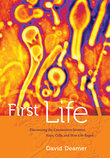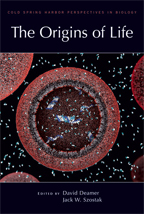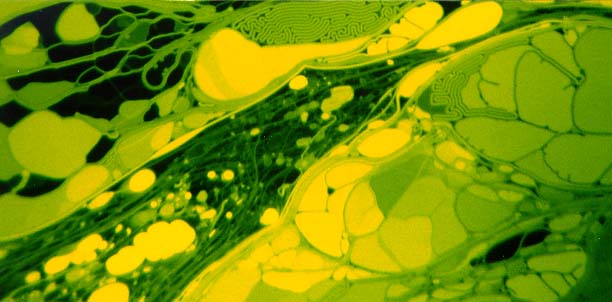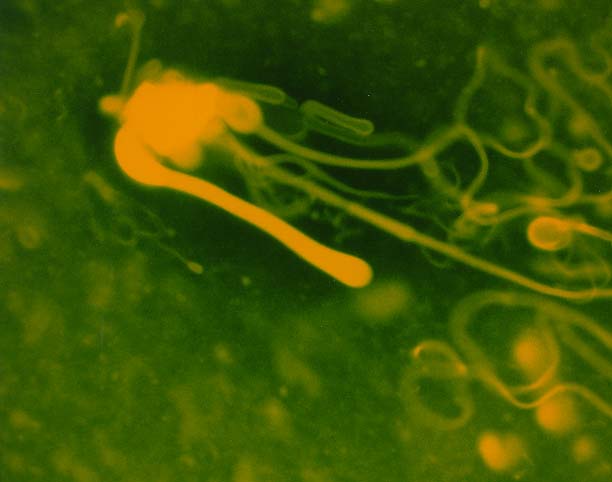David Deamer: First Life

 |
Talk by David Deamer
Moderator Discussion following with |
Books by David Deamer  |
Forum on First Life
A challenge for origins of life research is to understand the minimal complexity that will allow life to begin as a functional system of compartments and large molecules capable of catalysis and replication. My research in this field was sparked during a sabbatical leave spent in 1975 with Alec Bangham, who discovered that phospholipids can assemble into structures now called liposomes. It was also spurred by Sherwood Chang at NASA Ames, with his gift of a sample of the Murchison meteorite. This led to the discovery that amphiphilic compounds are present in carbonaceous meteorites that are capable of self-assembly into membranous vesicles. Working with Lou Allamandola and his research group, also at Ames, we showed that membrane-forming compounds are synthesized in conditions simulating pre-cometary ice grains exposed to UV radiation.
Image below: Abiotic formation of complex organic compounds. The abiotic formation of complex organic compounds that are required for life is illustrated by these cylinders of phospholipids created by David Deamer using a hydration/dehydration process.
 Given that membranous compartments were likely to be available on the prebiotic Earth, the next question is how systems of molecules could be encapsulated and then grow by polymerization, and replicate. I will describe recent results in which we simulate fluctuating environments resembling hydrothermal systems related to volcanism. Such conditions, in the presence of mulltilamellar lipid matrices, can organize nucleotide monomers in such a way that polymerization into RNA-like molecules is promoted. Furthermore, if a template strand is present, the same conditions allow alignment of monomers on the template, followed by polymerization and transmission of sequence information.
Given that membranous compartments were likely to be available on the prebiotic Earth, the next question is how systems of molecules could be encapsulated and then grow by polymerization, and replicate. I will describe recent results in which we simulate fluctuating environments resembling hydrothermal systems related to volcanism. Such conditions, in the presence of mulltilamellar lipid matrices, can organize nucleotide monomers in such a way that polymerization into RNA-like molecules is promoted. Furthermore, if a template strand is present, the same conditions allow alignment of monomers on the template, followed by polymerization and transmission of sequence information.
Image below: Organic material on earth. A thin layer of egg phosphatidylcholine (PC) stained with rhodamine to reveal lipid nilayers forming both vesicles and multi-lamellar structures (from Dave Deamer and Charles Apel).

David Deamer, Research Professor of Biomolecular Engineering at the University of California (Santa Cruz) is Director of a newly-established Astrobiology Center, a collaboration of NASA Ames and University of California researchers. He has recently published two new books. First Life: Discovering the Connections between Stars, Cells, and How Life Began (University of California Press, 2011). Deamer also co-edited Origins of Life with Jack Szostak, published by Cold Spring Harbor Press, 2010. Deamer’s research focuses on how linear macromolecules traverse nanoscopic channels. Single-stranded nucleic acid molecules can be driven electrophoretically through a nanoscopic channel embedded in a lipid-bilayer membrane, and the presence of the polynucleotide in the channel affects the ionic conductance in a manner related to chain length, concentration and base sequence. This observation has considerable potential for characterizing DNA and RNA in microscopic volumes of nucleic acid solutions. A second line of research concerns molecular self-assembly processes related to the structure and function of biological membranes, and particularly the origin and evolution of membrane structure. One example of such research was reported by Dworkin et al. (2001), which showed that photochemical reactions simulating those occurring in the interstellar medium give rise to amphiphilic molecules that can self-assemble into membrane structures. Apel et al. (2001) and Monnard et al., (2002) went on to show that membranes can self-assemble from simple amphiphiles such as fatty acids and alcohols, and that such processes are markedly affected by ionic content of the environment. These results help us to understand how primitive forms of cellular life appeared on the early Earth and were able to capture nutrients from the surrounding medium and incorporate them in intracellular growth processes.
First Life: Discovering the Connections between Stars, Cells, and How Life Began. University of California Press. 2011.
Further discussion of the aquatic origins of life.
